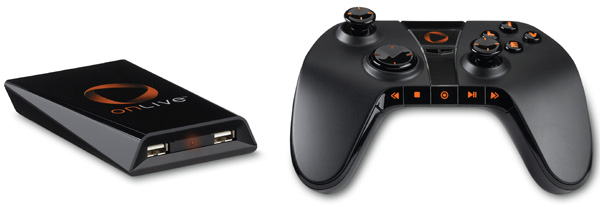
OnLive is a cloud computing company focused on videogames. They render the games using their computers, then stream the information to yours using the internet. Some advantages of this include being able to play the games they offer on any hardware that can install their software, no installation, and cloud based save file storage. Disadvantages are that you don’t own the games, there is significant latency, you need fast internet, and the graphics are crappy. In the future, the last three issues will be solved.
OnLive just announced a console; a bare bones computer with a few video/audio output options, some USB ports, an ethernet port, and support for their own wireless controller. $100.
OnLive’s company idea is pretty “obvious”, but it is certainly not easy to implement on a widespread, accessible, videogame-playing, commercial level, which they have mostly accomplished. It may or may not be the future of gaming. I say that because the only videogames that require levels of computational power greater than a modern cellphone are a small subset of new, mostly hardcore games, which are dwarfed in popularity by every other videogame in existence. Fifty years from now, that sentence will still hold true. So the outcome depends mostly on which distribution system wins the profits war, and the answer is going to vary depending on the type of game. There is a lot more to think about in this cloud computing vein, but I don’t want to write it all up. The big question is how the following will balance out in the commercial sphere (the one I care about!): the need for computational resources, our ability to continue miniaturization of computers, the cost of such computers, and our ability to increase internet bandwidth.
categories:
- read
- use
tags:
- me